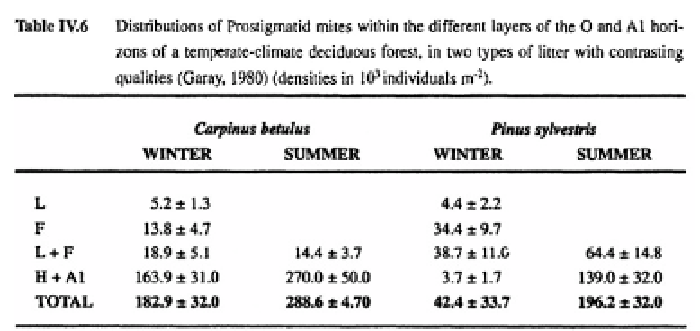Agriculture Reference
In-Depth Information
In tropical environments, litter communities also include a wide diversity and
abundance of invertebrates (
e.g.,
Lavelle
et al
., 1981; Lavelle and Kohlmann, 1984:
M'Boukou-Kimbatsa
et al.,
1998). In these environments, litter systems are often limited
in magnitude because of high decomposition rates and massive exportation of litter to
the termito- and drilospheres. Consequently, the population densities and biomasses of
other invertebrates are frequently lower than in temperate or boreal litters. In these forests,
however, epiphytic litter systems frequently occur in, for example, the leaf crowns
of Bromeliaceae, and these systems may have highly abundant and active invertebrate
communities. In a tropical rain forest in southeastern Mexico, the population density of
macro-invertebrates per gram of litter in Bromeliaceae was 12 times as high, and the
biomass 3-fold higher than the equivalent values in ground litter. Where water accumu-
lates within the leaf bases of the Bromeliaceae, the decomposer community may include
such normally-aquatic components as dragon fly (Odonata: Zygoptera) larvae or those
of the family Eristalidae (Diptera) (Lavelle and Kohlmann, 1984).
Relationships between litter biomass and invertebrate abundance are not straightforward.
In some circumstances, a clear relationship may exist between the weight of litter accu-
mulated at the soil surface and the abundance of the invertebrates that exploit the feeding
resources and habitats of this system (
e.g.,
litter feeding arthropods in Figures I.44 and
IV.23). However, in other circumstances, an inverse relationship may result, as when
rapid litter consumption leads to substantial population increases (Garay, 1980).

